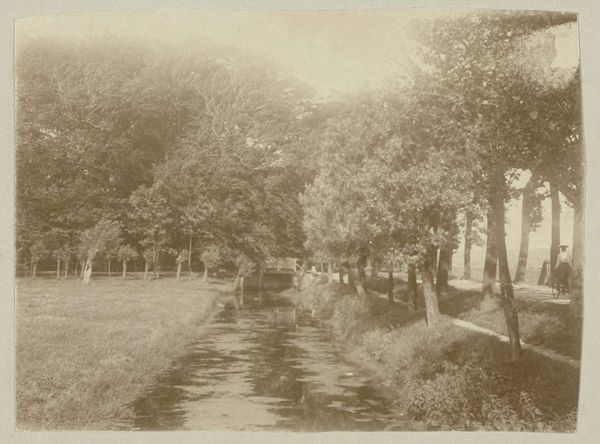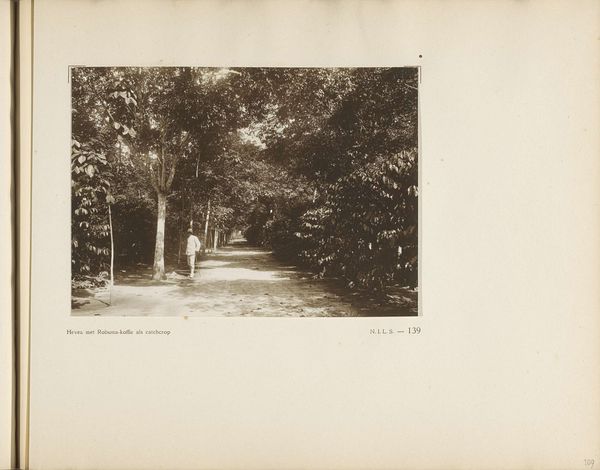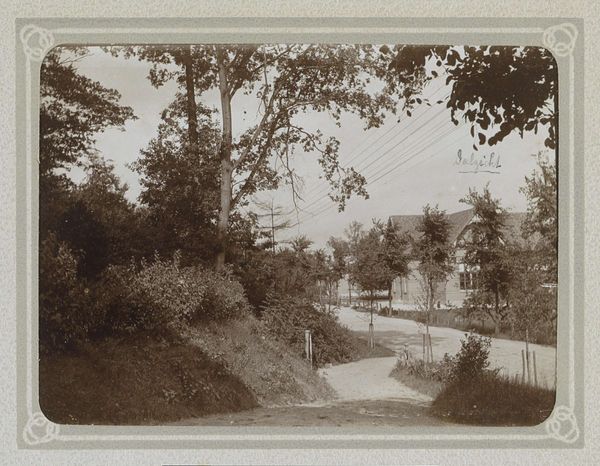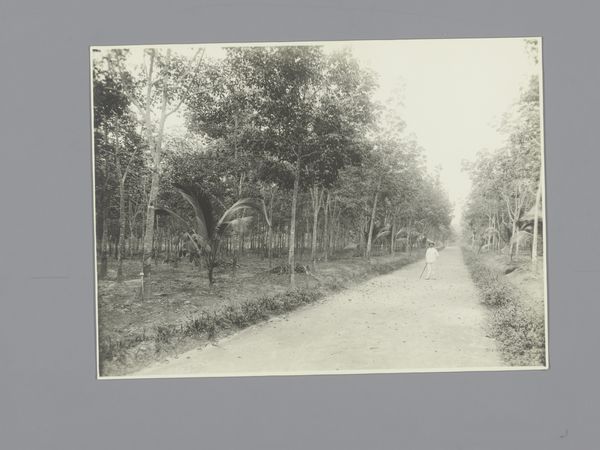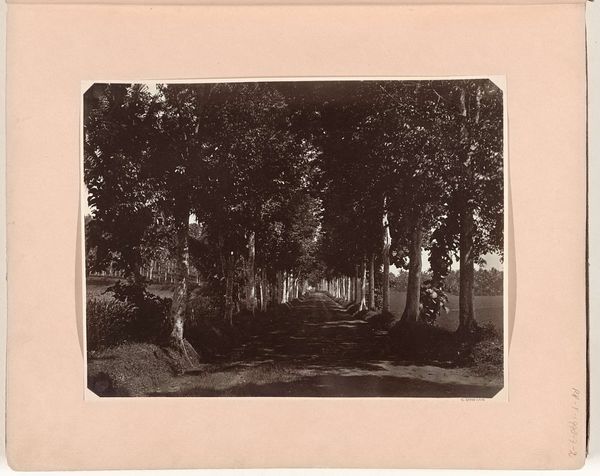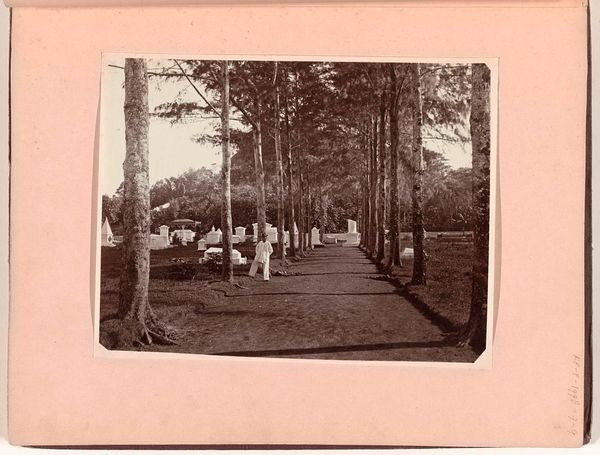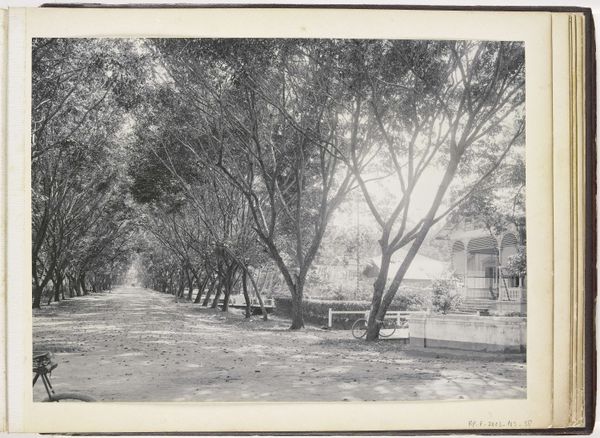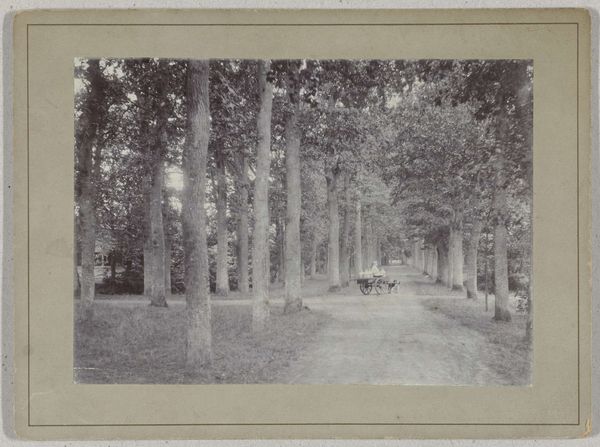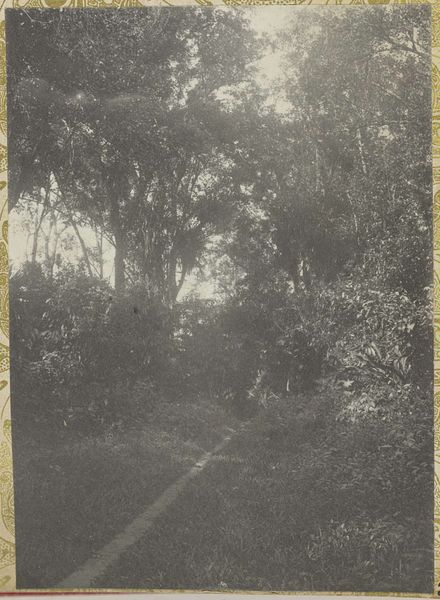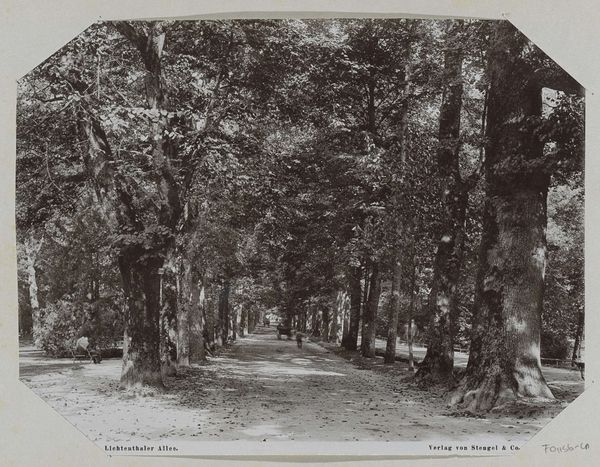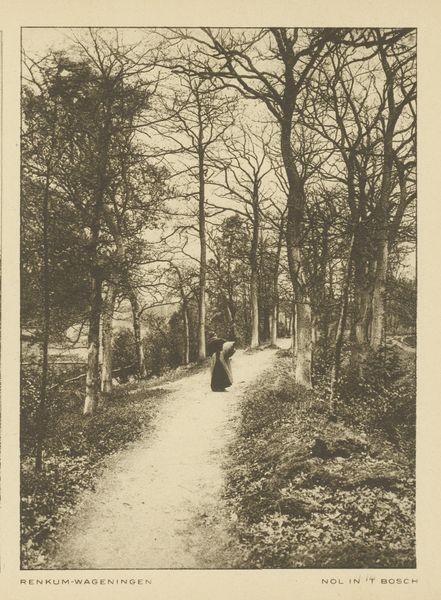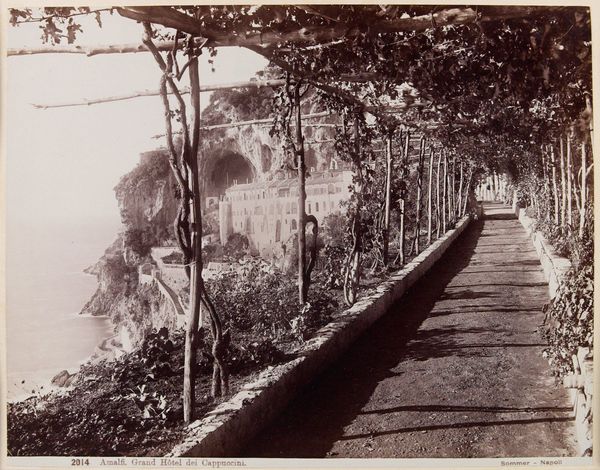
Man en vrouw op een laan naar het café van Villa Pallavicini in Pegli c. 1870 - 1890
0:00
0:00
Dimensions: height 215 mm, width 277 mm
Copyright: Rijks Museum: Open Domain
Curator: Celestino Degoix's "Man en vrouw op een laan naar het café van Villa Pallavicini in Pegli," created sometime between 1870 and 1890, offers us a glimpse into leisure during that era. Editor: It's quite subdued. The sepia tones evoke a sense of nostalgia, almost like peering into a faded dream. The strong perspective draws the eye, doesn't it? Curator: Indeed. What intrigues me is the photographic process itself. Degoix, presumably working en plein air, would have contended with the limitations of early photographic technology. Consider the preparation of the glass plate negative, the precise timing of the exposure in shifting light conditions, and the subsequent development. Each stage relied on chemical processes and meticulous handcraft. Editor: That's interesting, but it also creates a pleasing visual balance; the dark trees contrast against the pale sky. The eye is directed to the focal point. Do you see the architecture, it has strong geometric lines. It offers an interesting counterpoint to the natural shapes around it. The very use of perspective creates an idealized scene that reminds me of Romanticism. Curator: The romanticism certainly hints at something larger. Was Degoix responding to the growing industrialization of the era? Did the privileged class have time for simple outdoor pleasures while, conversely, many struggled with basic survival. Think about how access to public space became a complex issue related to class and leisure. This image documents a carefully managed natural environment and implicitly, the social order that sustained it. Editor: While important, those contextual points don't detract from the art in the photo itself, do they? What do you suppose? Perhaps those muted tones also emphasize the passage of time and even make viewers ask bigger questions around temporality itself. Curator: Precisely! And how that passage impacted people’s work, environment, and lived realities! Editor: Thinking about composition, tones, lines and contrasts helps draw some insights, doesn't it? Curator: I’m still contemplating the process itself, and that intersection with labor! It is very telling and offers important insights into 19th century industrial and social evolution!
Comments
No comments
Be the first to comment and join the conversation on the ultimate creative platform.
